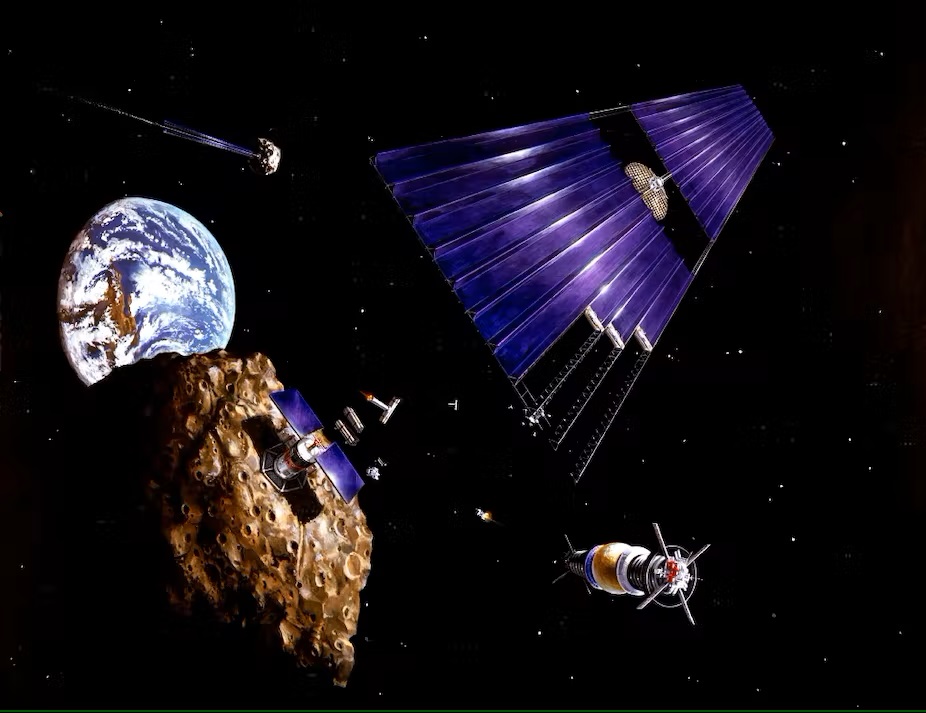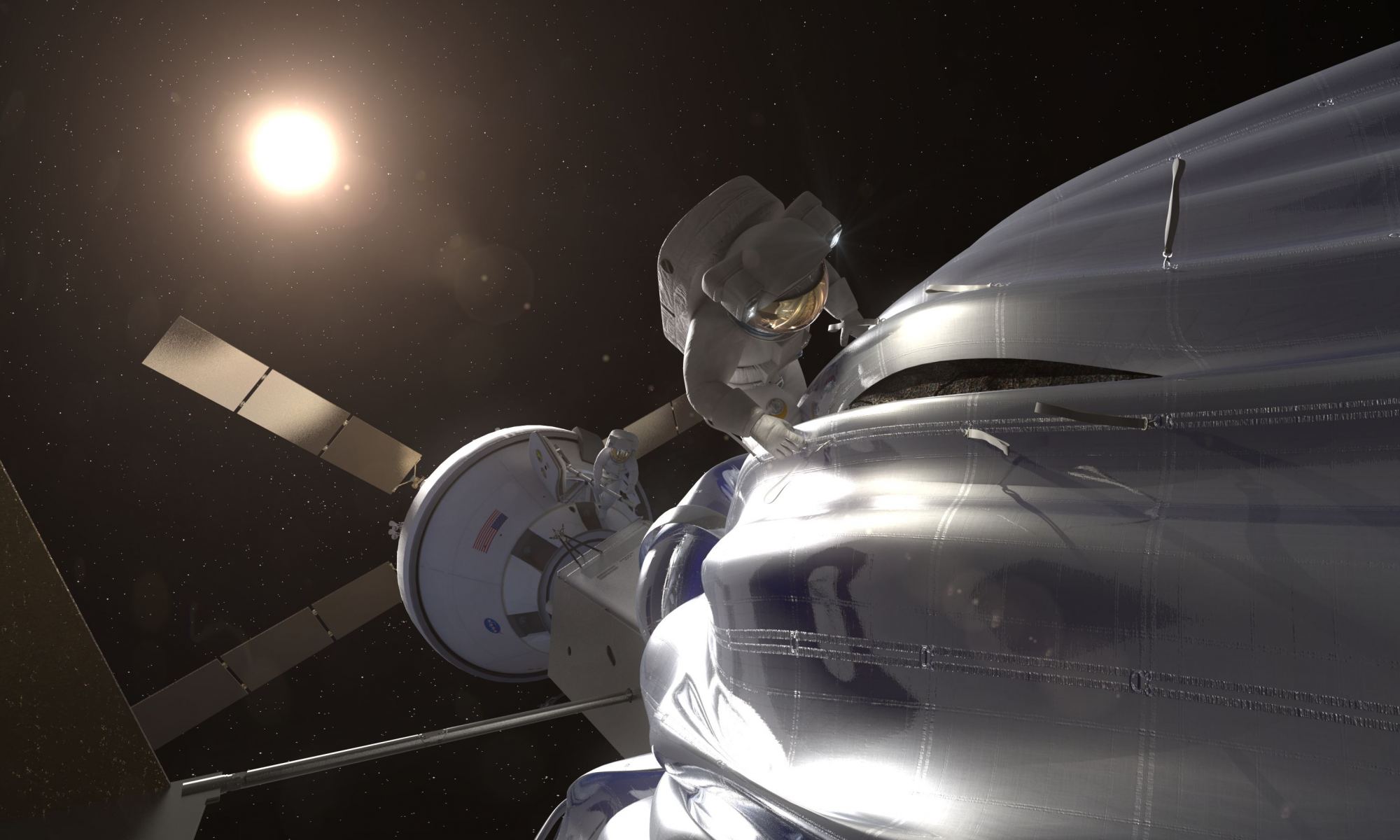About a decade ago, the prospect of “asteroid mining” saw a massive surge in interest. This was due largely to the rise of the commercial space sector and the belief that harvesting resources from space would soon become a reality. What had been the stuff of science fiction and futurist predictions was now being talked about seriously in the business sector, with many claiming that the future of resource exploitation and manufacturing lay in space. Since then, there’s been a bit of a cooling off as these hopes failed to materialize in the expected timeframe.
Nevertheless, there is little doubt that a human presence in space will entail harvesting resources from Near Earth Asteroids (NEAs) and beyond. In a recent paper, a team of researchers from the University of Nottingham in Ningbo, China, examined the potential impact of asteroid mining on the global economy. Based on their detailed assessment that includes market forces, environmental impact, asteroid and mineral type, and the scale of mining, they show how asteroid mining can be done in a way that is consistent with the Outer Space Treaty (i.e., for the benefit of all humanity).
The research was conducted by He Sun, Junfeng Zhu, and Yipeng Xu, three researchers from the Department of Computer Science at the University of Nottingham. They are part of a research group known as GemAI (Group for Equity Modeling with AI) that explores the intersection between mathematical modeling, artificial intelligence, and the social sciences (largely focused on equity issues). The paper describing their findings is currently being reviewed for publication in the Annual Review of Sociology.
Simply put, the prospect of asteroid mining comes down to resources and the continued growth of human civilization. There are many reasons cited for this, from ensuring the survival of humanity and life on Earth (having a “backup location” or becoming “multiplanetary”) to fulfilling a basic and ancestral need to explore and “wander.” Then there’s the idea of preventing ecological collapse here on Earth through mining and manufacturing or ushering in a “post-scarcity” society by relocating all of our resource extraction and manufacturing to near-Earth space, Cislunar space, and beyond.
Carl Sagan, the late and great physicist, author, and science communicator, summarized these beautifully and related how the two might be intertwined at the intuitive level. As he put it:
“The open road still softly calls, like a nearly forgotten song of childhood. We invest far-off places with a certain romance. The appeal, I suspect, has been meticulously crafted by natural selection as an essential element in our survival. Long summers, mild winters, rich harvests, plentiful game—none of them lasts forever. Your own life, or your band’s, or even your species’ might be owed to a restless few—drawn, by a craving they can hardly articulate or understand, to undiscovered lands and new worlds.”
From a material perspective, the rationale is that human growth is an exponential phenomenon that has been taking place ever since Upper Paleolithic Era (ca. 50,000 to 12,000 years ago). The period that has since followed – the Holocene – has seen the rapid proliferation of human societies and the growth of their impact on environmental systems worldwide. The trend has become so acute that by the mid-20th century, geologists began referring to the current epoch as the Anthropocene, where humanity is the single-greatest driver of environmental changes on the planet.
The belief that humanity’s future lies in space commands a large following today, thanks in no small part to the rise of the commercial space (aka. NewSpace) industry. Another factor is the continued pressure to ensure that there are enough resources to see to the needs of a growing population, coupled with the effects of climate change. As we approach the mid-21st century, the greatest challenge will be providing for an estimated 10 billion people worldwide amid the impacts of climate change. The argument goes that if our future is to be assured, then off-world resources must be harnessed.

The demand for minerals, He Sun explained to Universe Today via email, is a major factor in ensuring resource abundance:
“Due to the fact that the total amount of minerals on the planet is finite, continuous advances in resource recovery technology cannot fundamentally solve the problem of mineral depletion. In this context, the significance of asteroid mining is becoming more apparent. Large asteroid mining companies (including Space X, Blue Origin, and others that already have a presence in this area) could create hostile competition. To prevent the disorderly expansion of capital and related industrial monopoly, it is necessary for the United Nations to establish relevant regulations.“
To prevent asteroid mining and the future space economy from becoming a “Wild West”-type situation, there are many calls for laws to be drafted that could prevent cutthroat competition and ensure that mineral wealth is used for the good of all humanity. This is in keeping with the Outer Space Treaty signed in 1967 between the U.S., the Soviet Union, and the U.K., which were the most influential players in space at the time. The Treaty has since been signed and ratified by 112 countries (as of February 2022) and remains the most important piece of space legislation ever passed.
According to NASA, the Outer Space Treaty is the inspiration behind the Artemis Accords, a set of principles and best practices governing international partnerships to advance the Artemis Program. As stated in Section I – Purpose and Scope, the Accords are “intended to increase the safety of operations, reduce uncertainty, and promote the sustainable and beneficial use of space for all humankind.” The Treaty, says He Sun, also served as a background to the team’s analysis:
“On the one hand, it reflects the concern of the United Nations about asteroid mining (the important value of asteroid rare earth metals, the growing space power of companies and national space agencies),” he said. “On the other hand, our paper provides [the UN] with improved programmatic policies to prevent the negative effects on global equity of possible scenarios such as monopolies, resource curses, etc.”

He Sun and his colleagues began their analysis with an appraisal of the global situation and space exploration capabilities of various countries. They then focused on creating a model that would measure the impact of space mining on global equity and formulating policies that would ensure (as much as possible) that all people would share the benefits. The first step was to calculate a Unified Equity Index (UEI) for each country, which consisted of an analysis of six factors: economic, education, science and technology, health, environment, and social stability.
In short, they considered how a country’s UEI would be affected by things like wealth inequality (the Gini coefficient), Gross Domestic Product (GDP), unemployment, the average level of education, the average number of patents and research expenditures, life expectancy and health outcomes, environmental issues, and crime rates. From this, they obtained an Equity Index for the entire world based on the entropy of each country’s UEI. This brought them to step two, where the impact of asteroid mining was simulated based on the types of asteroids being mined.
This was based on three broad categories scientists use to classify asteroids: C-type, S-type, and M-type. Whereas C-type (chondrite) asteroids – the most common – contain large amounts of carbon and are composed mainly of clay and silicate rocks, S-type (“stony”) asteroids are composed of silicate minerals and metal (nickel-iron), and M-types are mostly metallic. They also considered which entities were involved (private, national, international) and changing mineral values over time. Said He Sun:
“In addition, we define the impact of mining and equity through a gray correlation matrix derived from mineral development data for a typical country (the United States) over the last 50 years with data from these indicators. This gray correlation matrix is used as a bridge to future global equity impacts of asteroid mining. We use these gray correlation coefficients, the scale of future plans for asteroid mining for each entity, and the change in equity for 20 countries over time to predict the impact of asteroid mining on global equity in the coming decades.”

In particular, their model looked at how the value of minerals would change between 2025 and 2085, coinciding with the expected growth of asteroid mining in this century. Ultimately, their model showed that without regulation, the gap between space-competitive entities (countries with space programs, companies with advanced space capability) and other entities would increase profoundly, and equity within nations would become graver. To this end, they made some specific recommendations.
“We suggest the UN add the Mining Information Policy, Mineral Legacy Policy, Mutual Assistance Policy, Antitrust Policy, and Transaction Guidance Policy to the updated version of the Outer Space Treaty,” said He Sun. “There are unimaginably tremendous resources in space, and if we do not exploit and distribute them wisely, the consequence will be severe.”
Of course, He Sun and his colleagues make these recommendations with the caveat that asteroid mining is still a hypothetical venture, mainly because the associated costs are still prohibitive. A lot of work needs to be done before it can become an industry that promises to relocate resource extraction to space and usher in a “post-scarcity” economy. This includes a further reduction in launch costs, the creation of infrastructure in Low Earth Orbit (LEO) and wherever else we intend to mine, and the ability to process minerals in space cheaply.
Nevertheless, there is little doubt that the prospect of asteroid mining is approaching, and multiple legal, ethical, and economic questions need to be addressed beforehand. Like many aspects of humanity’s future in space, these efforts are intended to prevent a “free-for-all” that could turn space into the next scramble for resources, territory, and imperial ventures. If space is to be for all humankind, we need to take the necessary steps to make sure it’s not claimed and exploited for the benefit of the few.
Addendum: Yipeng Xu was the Chinese researcher to name an exoplanet discovered by Chinese astronomers and its host star: “Wangshu” and “Xihe,” which mean “moon goddess” and “sun goddess” in Chinese mythology (respectively). Yipeng recently researched weak gravitational lensing and galaxy morphology using deep learning models at the Chinese Academy of Sciences (CAS).
Further Reading: arXiv

